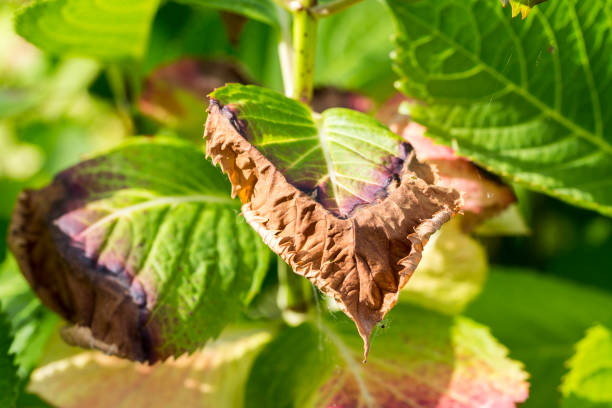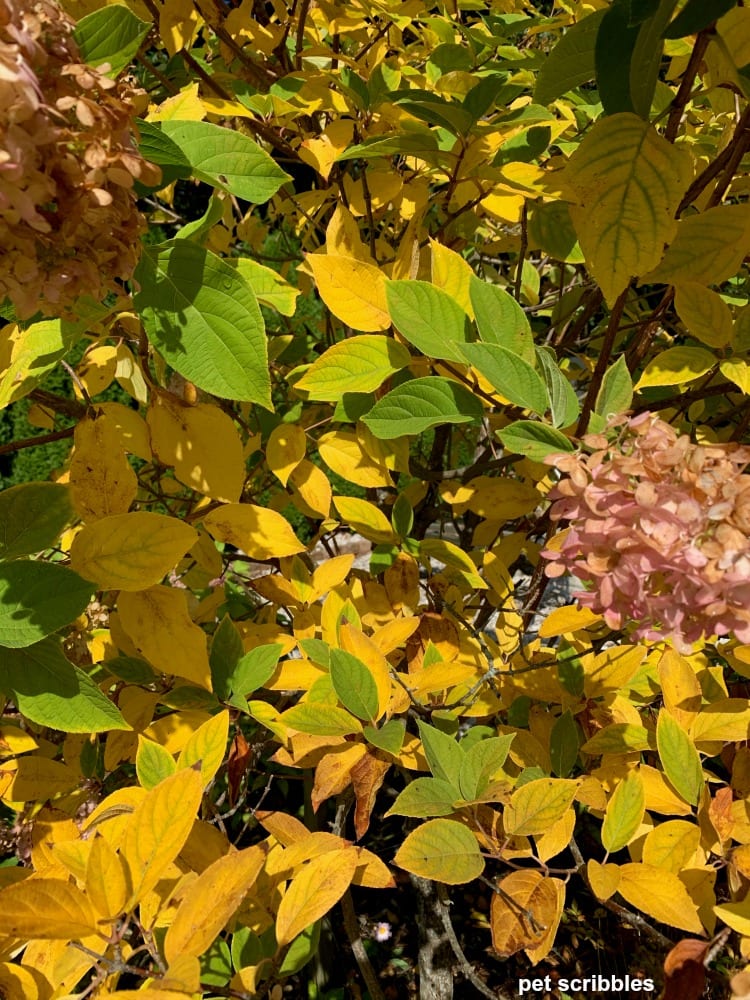Indicators on Hydrangea Leaves Turning Yellow You Need To Know
Some Ideas on Hydrangea Leaves Turning Yellow You Need To Know
Table of ContentsHydrangea Leaves Turning Yellow Fundamentals ExplainedWhat Does Hydrangea Leaves Turning Yellow Mean?Hydrangea Leaves Turning Yellow Can Be Fun For EveryoneGetting My Hydrangea Leaves Turning Yellow To WorkSome Known Facts About Hydrangea Leaves Turning Yellow.
As you seen in the area above this can be caused by underwatering. Nonetheless, overwatering can also trigger dehydration, as counterintuitive and weird as that might appear (Hydrangea Leaves Turning Yellow). Overwatering can choke off oxygen to the origins, which your houseplant needs to endure. The damp water-soaked dirt will certainly also imply plant roots will certainly begin to die as root rot takes hold.Therefore the plant becomes dehydrated also though it is resting in an abundance of water. Decaying origins will certainly turn glossy and black with a mushy texture and a decaying scent. The fallen leaves of your hydrangea may drop off, and the ones that are still attached will be yellowed or brownish and be mushy at the stem.

Without your treatment, those leaves will promptly transform brownish, after that black as they melt. Where you put your hydrangea matters a whole lot if you desire your plants to keep its complete depth of shade and have appealingly eco-friendly fallen leaves. SIf your hydrangea is an interior plant in your home then you will likely have a choice of four window instructions: north, southern, east, and west.
Not known Details About Hydrangea Leaves Turning Yellow
Hydrangea obtaining excellent light, Straight sunshine for hydrangeas is suitable in the morning. When the afternoon sunlight strengthens, the direct light is also scorching, so offer indirect light to partial shade. Spotted shade is one more choice. Enable me to describe a few of these "light" terms. Straight light is the kind of light a plant obtains when it sits straight in the sun.
Spotted shade means your hydrangeas have overhanging cover, such as a larger tree or plant. The sunlight comes with directly, yet the cover of the bigger plant permits the sunshine in only occasionally via the openings in the branches or leaves. Hydrangeas can grow in straight sunlight as long as they are well watered a watered frequently.
Photosynthesis, as we all recognize, is important for plant survival, so chlorosis demands to be treated promptly. Hydrangea Leaves Turning Yellow. While chlorosis can be brought on by various other nutrient deficiencies, it is most frequently an iron deficiency. In the complying with section you will certainly find out just how to recognise whether your plant has an iron deficiency or another thing
First shows up on the older leaves, but the leaf capillaries stay green. While there is normally sufficient iron in natural soil, hydrangeas commonly struggle to soak up enough of it.
How Hydrangea Leaves Turning Yellow can Save You Time, Stress, and Money.
The very best way to avoid iron deficiency-chlorosis in hydrangeas is to plant them in ideal ericaceous or acidic dirt. When growing in a bed, mix in some peat or reduced-peat ericaceous garden compost and examine the p, H value yearly. This is necessary due to the fact that the garden compost blend around the plants will certainly influence the p, H worth of the dirt in the lengthy run and the p, H value may increase once again.
It is only made use of on an industrial scale, where an extended iron shortage would certainly suggest considerable yield losses. The special fertilizers for this are usually pricey and need to be applied in really precise doses to stay clear of damage to the leaves. Foliar fertilisation is just efficient for a brief period and has to be applied regularly or supplemented by normal iron fertilisation.
Input your search Continued key words and press Go into.
We're best in the center of our late-blooming hydrangea period right here, so I assumed I would certainly share a suggestion for this certain kind of hydrangea that I located truly intriguing. A lot of people have a similar concern with their panicle hydrangeas where they begin to see the leaves turning yellow and dropping off at different components of the period and it can be pretty dramatic and quite concerning because it can occur truly swiftly on a shrub that appears like it's or else truly healthy.
The Definitive Guide for Hydrangea Leaves Turning Yellow
I have actually shared it on Instagram prior to, but I understood I have actually never ever informed you regarding this in a real, complete blog site message, so today I'm looking after that. When I state that this puts on panicle hydrangeas, that indicates the kind of hydrangeas that normally bloom later on in summertime, usually around August.

If you actually want to optimize blooms, a (the middle number) will actually help raise the number and size of your blooms. find out here now You ought to see the number of newly-yellowed leaves lower pretty rapidly as quickly as you provide your hydrangea the food it needs. The bright side is that if you do absolutely nothing, the plant will still be fine, it will certainly simply have a couple of much less leaves.
Courtenay is the writer of guide The Cleaning Ninja and has actually been included in numerous magazines consisting of Nation Sampler Farmhouse Design, Better Residences and Gardens, Parents Magazine, Real Simple, and Our Residences.
An Unbiased View of Hydrangea Leaves Turning Yellow
The spots develop as a result of water drops from rainfall or watering that remain on fallen leaves during warm and moist conditions. This is especially real in huge plant baby rooms and property or industrial landscapes that use overhanging irrigation regularly. When making use of above watering it is best to water in very early to mid early morning so the sunlight can dry the water from vegetation.